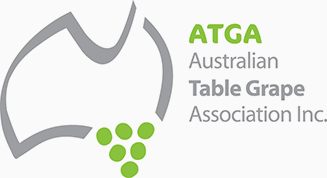Table grape consumer acceptability lifts across 2023
Domestic table grape consumer acceptability lifted slightly in 2023, according to retail monitoring and NielsenIQ consumer satisfaction surveys.
Whist consumer acceptance didn’t reach the target level of 80 per cent, the Australian table grape industry received an average of 78 per cent, a positive result given challenging growing conditions which affected maturity, particularly in the early part of the domestic season. This was a significant increase on 71 per cent in 2022.
The Australian Table Grape Association set the 80 per cent consumer acceptability benchmark in October 2019 as part of the ongoing minimum maturity standards (MMS) program. The project team determined through extensive monitoring and evaluation that an increase in Brix and decreased variability would lead to a more consistent eating quality, higher acceptability, more trust and increased consumer loyalty. That 80 per cent target is determined by 80 per cent of grapes in a representative sample meeting the minimum maturity.

The most recent maturity project, Minimum Maturity Standards Adoption in the Table Grape Supply Chain – funded by Hort Innovation through the table grape research and development levy and with contributions from the Australian Government – focused on the adoption of the MMS across industry and the wider supply chain.
Project lead Tristan Kitchener, of Kitchener Partners, said the overall performance of the domestic table grape category improved “markedly” on the 2021/22 season.
“Despite the challenges producers faced across the 2022/23 season, consumer acceptance, repeat purchases and satisfaction increased from last season,” Tristan said.
“NielsenIQ data showed that in the 2021-2022 season, only 63 per cent of buyers who had a negative eating experience returned to eating grapes at some point during the season. In 2022/23, despite the poorer start to the season, that figure had improved, with 80 per cent buyers returning to the category.
“While not as high as the 2020/21 result of 91 per cent, that increase in repeat purchase and satisfaction was largely led by improvements in quality, packaging and stock levels. Consumer satisfaction with pricing did decline, though, which is likely a symptom of the cost-of-living pressures resulting in affordability being more of a concern for consumers.”
Monitoring insights
Technical lead Andreas Klieber, of Quality Associates, related the challenges of achieving the MMS during parts of the season to extensive cloud cover and rain throughout the early and mid-season. This reduced sugar development and delayed maturation.
On-farm, distribution centre and retailer monitoring identified some inconsistencies with meeting MMS.
“For much of the season MMS were not consistently achieved,” Andreas said.
White grapes in general were variable in meeting MMS throughout the season, and Thompson grapes had particular issues with meeting Brix requirements at the later part of the storage program.
Red grapes performed particularly well in comparison to other grape types. MMS was consistently met except during the first few weeks of the season with Crimson grapes being the outstanding performer over a long season for the variety.
Black grapes performed well in most weeks of the season but also had individual weeks with low Brix levels across the season.
Retail insights
Consumer insights data from NielsenIQ showed interesting insights into consumer attitudes and purchasing behaviours.
Eating grapes was still largely impulse driven. Despite over half (57 per cent) planning to buy grapes, for as many as a third of these the decision will be finally executed in store based on visual cues of quality.
66 per cent only planned to buy a specific variety or colour, while 34 per cent made spontaneous purchases based on availability, price, display and range.
Supermarkets remain the key buying channel with 74 per cent of consumers buying their grapes in a bricks and mortar supermarket. Local fruit and vegetable retailers and online supermarkets accounted for 10 per cent of shoppers, followed by farmers markets, convenience stores and chain grocery stores each with 2 per cent the market.



Where to from here?
The Minimum Maturity Standards project is set to finish in October 2023.
The project team is seeking continuation of the project, with co-contribution from stakeholders (retailers and the five main suppliers), which would be matched by Hort Innovation.
Australian Table Grape Association CEO Jeff Scott said that extending the project would allow continued rigorous monitoring and testing to ensure immature fruit does not enter the market.
“We have the minimum maturity standards for a reason, and we developed the maturity testing procedures to help growers ensure they are not selling immature fruit, which can significantly damage both the domestic and export reputation of Australian table grapes,” Jeff said.
“It is a credit to the key domestic suppliers and retailers that they have worked together to collectively focus upon improving the consumer eating experience. The grape category is unique in fresh produce for taking a proactive approach to managing quality throughout the supply chain, from the farms through to the retail shelves”.
A decision on the continuation of the project is expected to be made by late September 2023.
